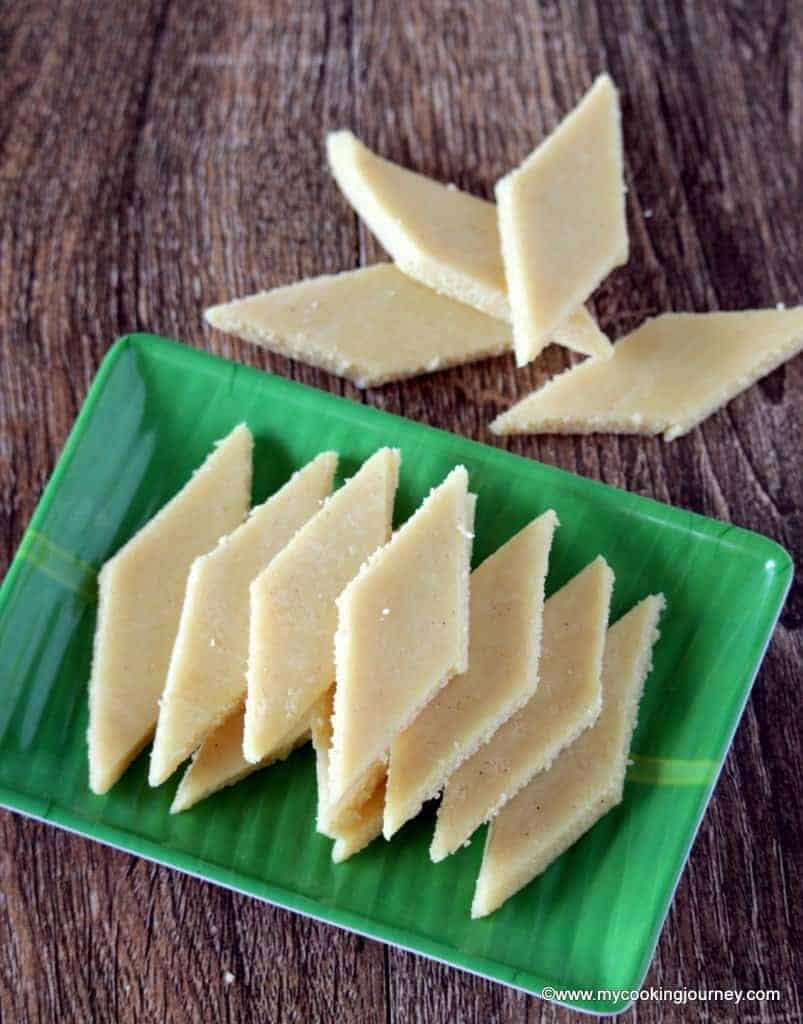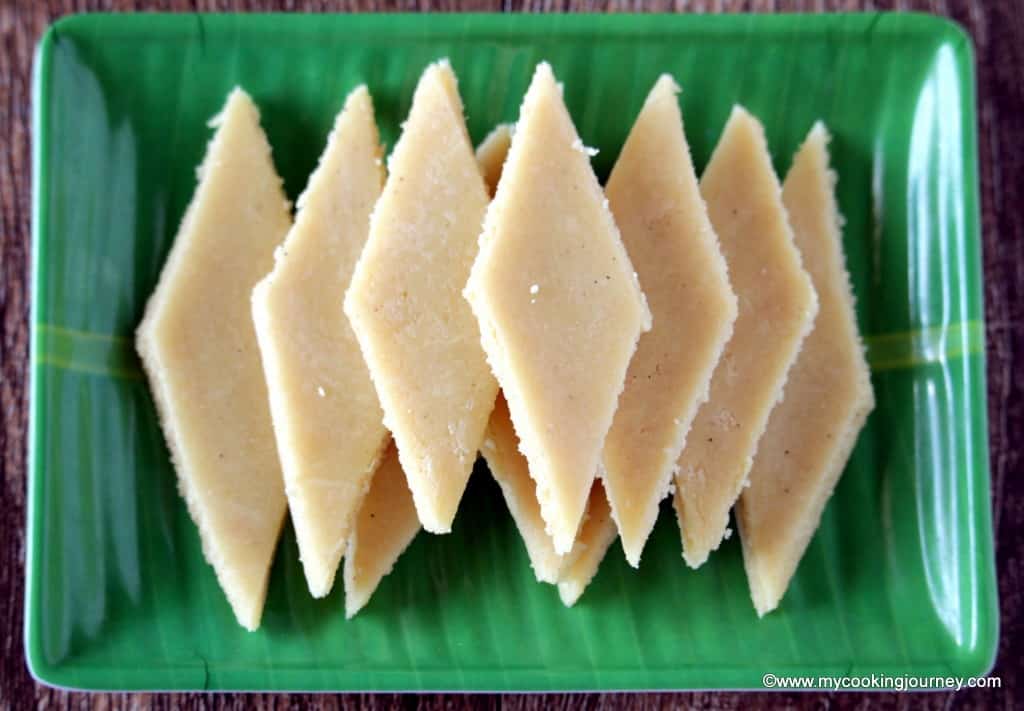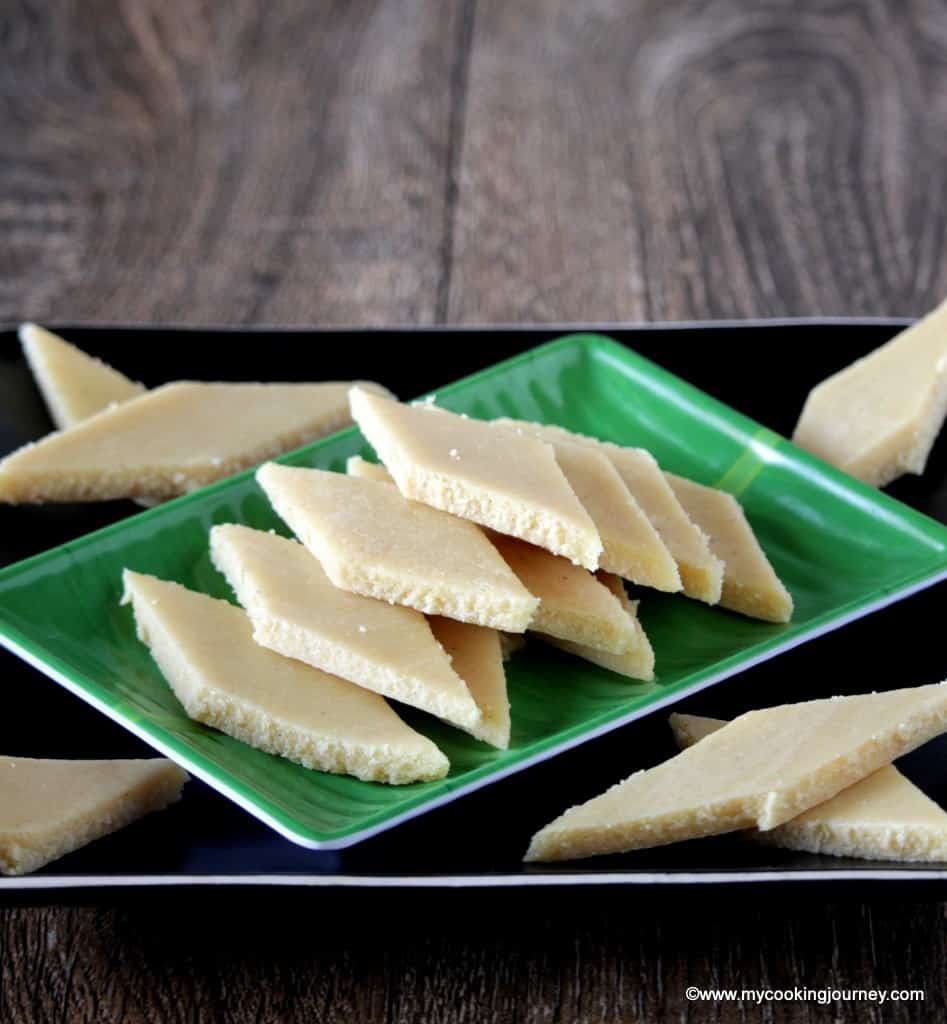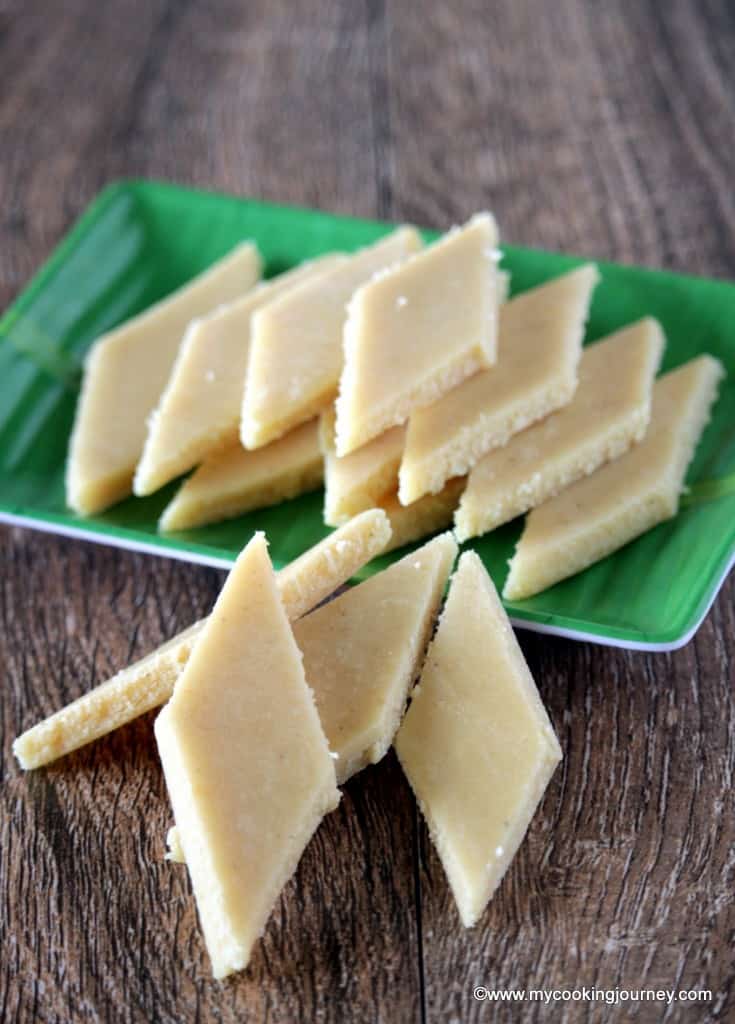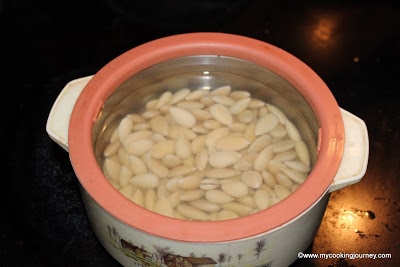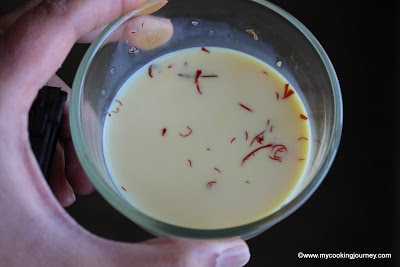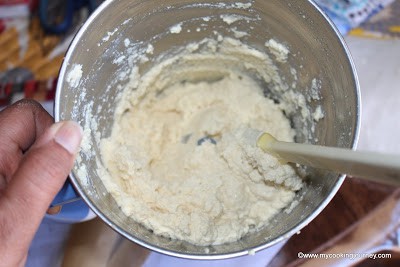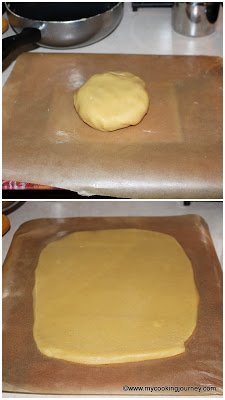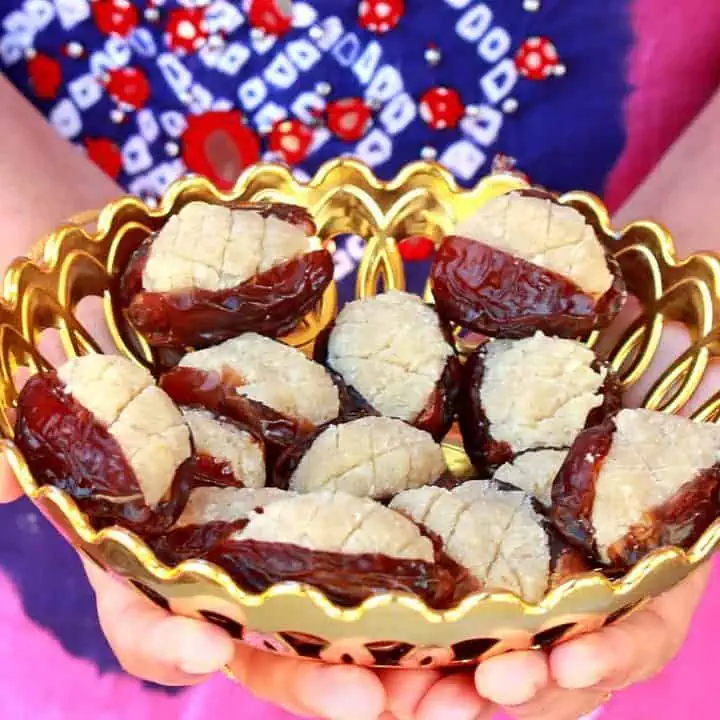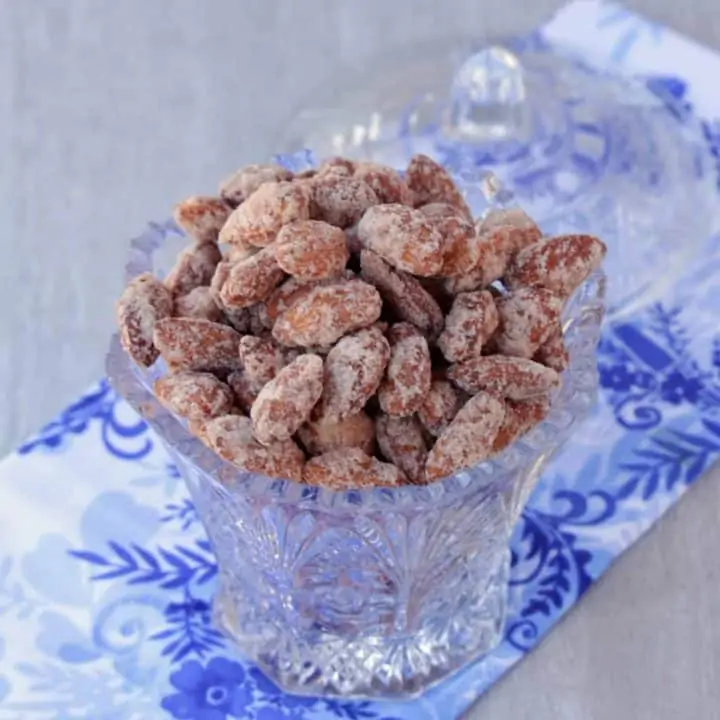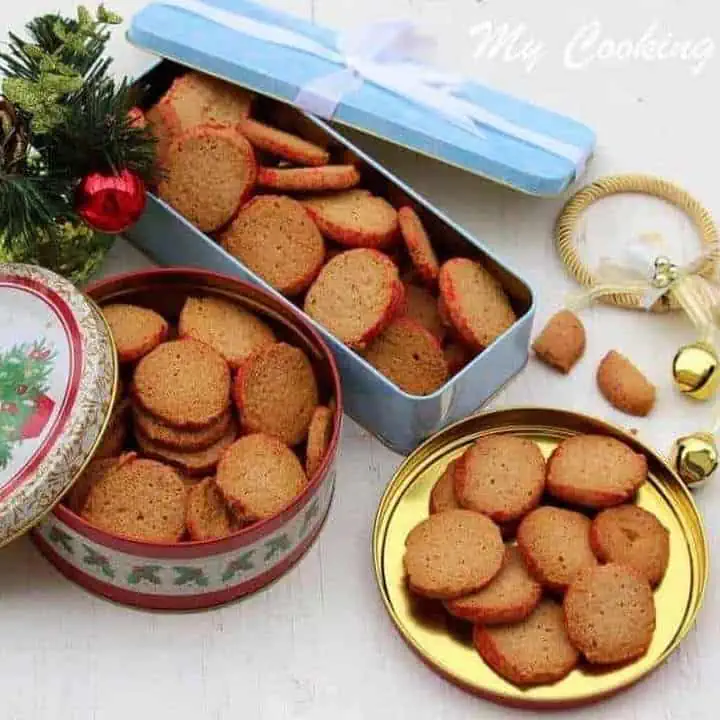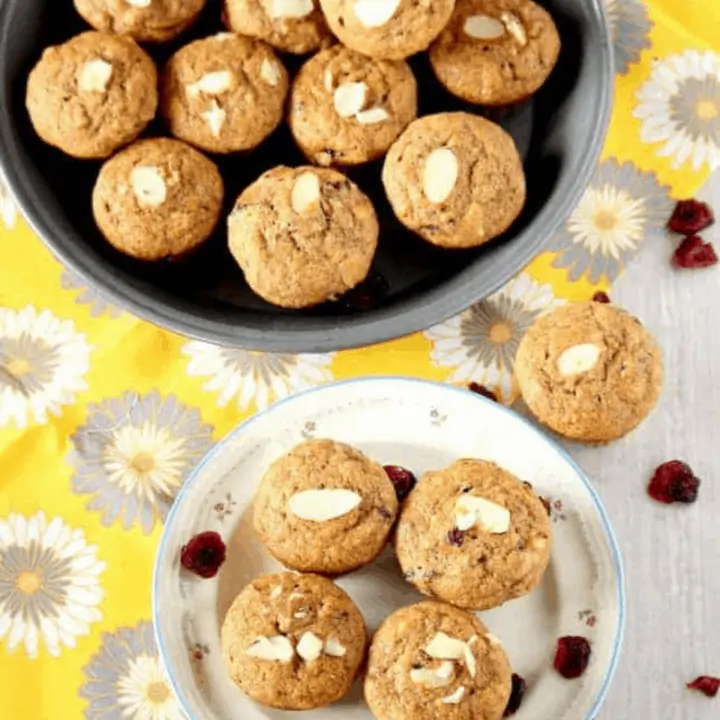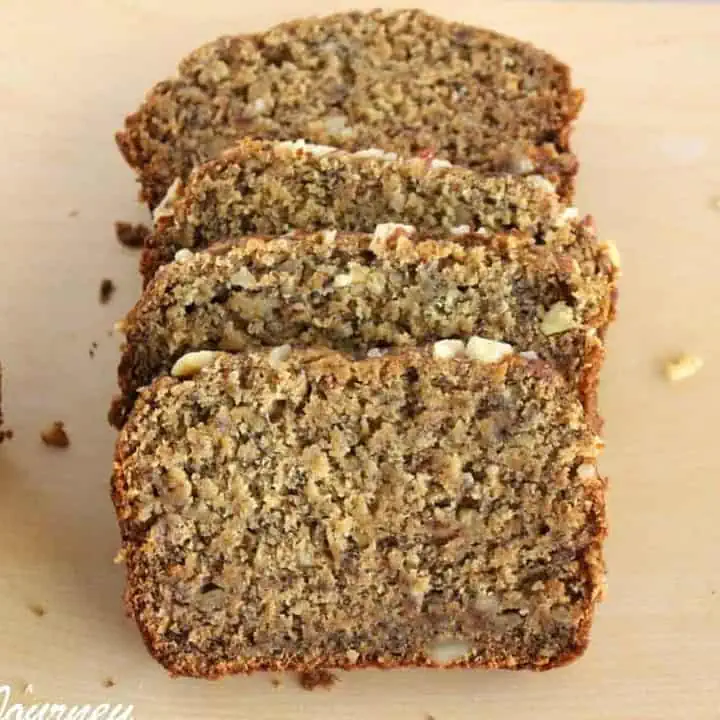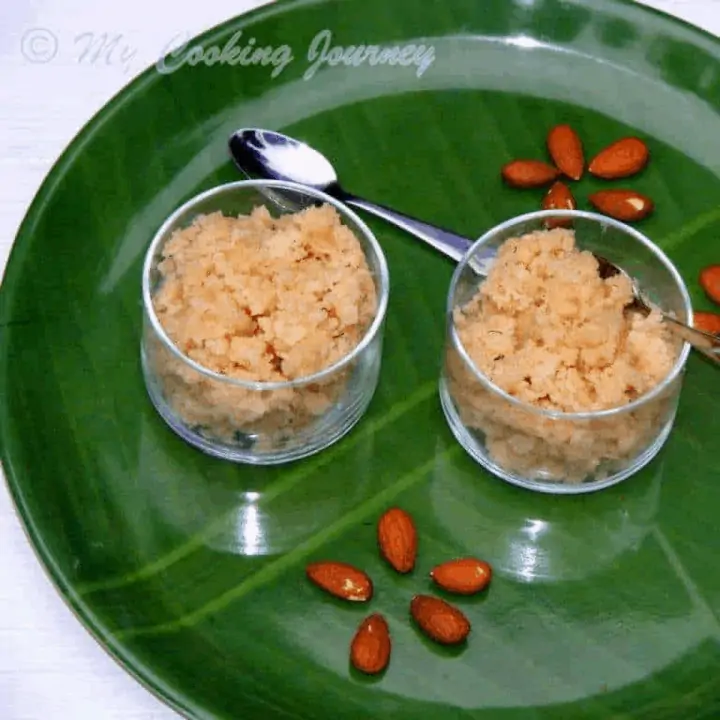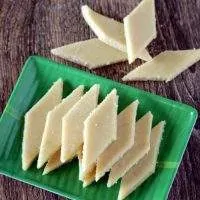Making burfis always gives me a jitter. Having said this, I make burfis very often as my kids love them. Yes, I have made blunders, but I have had many successes too. The best part about burfi (or how I see it) is, if the end part does not turn out the texture you want it to, it can be called halwa. Rarely have I gone beyond the cooking stage for burfi and made it crumbly, but many times I have cooked it under and made it as halwa. This time though when I chose to make Badam Burfi, I had to be very careful about the texture and I wanted it to turn out to be burfi as I already have blogged my Badam Halwa before. When looking for recipes, Kalyani was kind enough to guide me and also point me to this recipe from Nisha Madhulika’s site. I followed the recipe pretty close except for increasing the quantity of sugar.
Why make this Almond Burfi
Unlike many other burfi preparations, this Almond Burfi was much easier as there was no sugar syrup consistency involved. Using powdered sugar helped in getting a lovely texture. The badam katli also cooked fairly quickly. The best part is, if the katlis turn out too soft, we can return the mixture to the heat again and cook for a little bit more to get it right. I would like to add a little bit more next time when I make this almond katli as this quantity yielded a moderately sweet katli and my sugar-loving boys would have liked it a bit sweeter. Preparation time – 10 minutes plus a couple of hours of soaking timeCooking time – 20 minutesDifficulty level – medium
Ingredients to make Badam Burfi
Almonds (whole) Powdered sugar Nei / ghee Milk Saffron threads
Step-by-step Process
Preparing the Almonds - Boil water and soak the almonds in simmering water. Turn off the flame and let it sit for about 30 minutes. I use a hot pack / hot case to soak my almonds. After half an hour, remove the almonds from the water and peel their skin. The almond skin would come out very easily. Now again soak the peeled almonds in hot water for about 2 hours to soften them. This step is very important to make sure that we can grind the almonds very smoothly. Warm the milk and add the saffron thread to it. We will need ½ cup of milk, so I warmed the whole milk and then added the saffron to it. After the second soaking, drain the water and transfer the almonds to the blender/mixie jar. Slowly add the saffron milk and grind the almonds to a very smooth paste. Make sure the mixture is neither too thick nor too thin. It should be well-ground. If needed add a little bit more water or milk. In a heavy bottom (preferably nonstick) pan, Heat 1 tablespoon of ghee and add the ground almond paste and the powdered sugar. Stir well and cook the mixture over low-medium heat until it becomes a mass and starts to leave the sides of the pan and clinging to your ladle/spatula. The best part I noticed about this was you need to get it really stiff. So, don’t worry about losing the right stage and if it will become too crumbly. For the Badam katli to set well it needs to become quite a solid mass in the flame. Now turn off the heat and let the almond katli cool down until it is warm enough to handle. Grease your hands with little ghee and knead the mixture well. This ensures that the katli is very smooth without any chunks.
Shaping the Badam Burfi
Layer a piece of parchment over the work surface and grease it with a little ghee. Place the kneaded dough on the greased parchment and roll with a greased rolling pin. Roll until it is about ½ cm to ¾ cm thick. Let it sit for about 20 – 30 minutes to set. Using a ruler and a pizza cutter cut the katlis into the desired shapes and carefully remove them The Almond Burfi is ready to be served. Store in an air-tight container. The katlis have a longer shelf life and can be refrigerated for up to a month. Double soaking the almonds really helps in grinding them to a smooth texture to make this Badam Katli. I am going to use this method when making badam kheer as we all prefer it smoother. The cooking process is very quick and does not need a lot of stirring. When kneading the dough, take a small piece and flatten it. See if it sets well. If not, return the mixture to heat and cook it a little more. You can be fearless about how long you cook it. The Almond Burfi tends to be on the chewier side if you cook it less, so make sure you cook it until you can no longer stir. If you missed the stage and removed it too quickly, return it to the pan and cook it again for a few more minutes. The katlis had a better texture a day after it was made.
More Recipes With Almonds
If you made this recipe and liked it, give a star rating on the recipe card or let me know in the comments below. You could also share it with me on Instagram using #MyCookingJourney and tagging me @sandhya.ramakrishnan. You could follow me and my recipes on Facebook |Instagram | Pinterest | Twitter/X
Recipe
